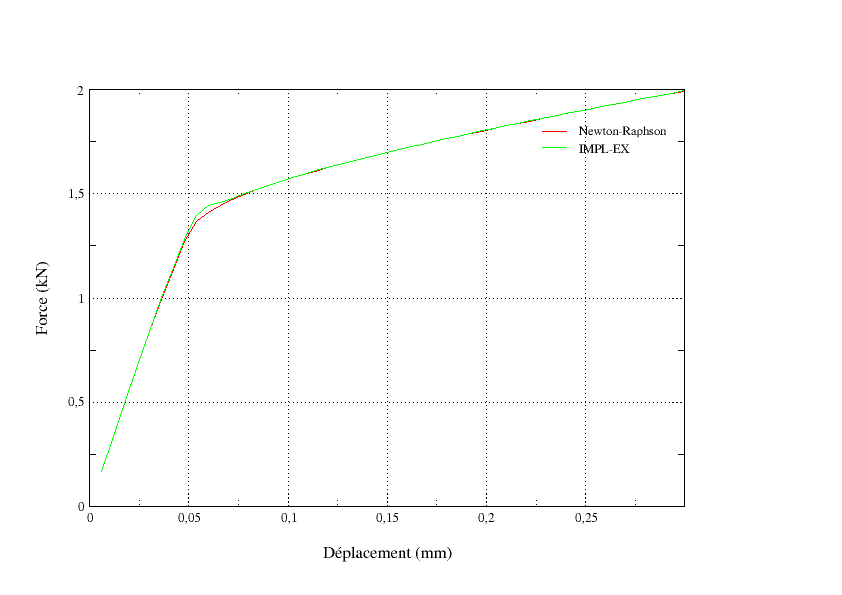4. B modeling#
This modeling tests the quadratic elements with the law of behavior VMIS_ISOT_LINE.
4.1. Characteristics of modeling#

Figure 4.1-a : B modeling mesh**
Modeling: D_ PLAN
Boundary conditions:
\(\mathrm{DX}=0.0\mathrm{mm}\) out of \(45\),
\(\mathrm{DY}=0.0\mathrm{mm}\) out of \(12\),
\(\mathrm{DY}=0.3\mathrm{mm}\) out of \(34\).
4.2. Characteristics of the mesh#
The number of knots is 297. The mesh consists of linear quadrangular elements:
SEG2: 92
QUAD4: 260
4.3. Tested sizes and results#
Figure 4.4-1 shows the force-displacement curves calculated with both methods. The values tested are differences in effort between the two methods at different times.

Figure 4.3-a : Force-displacement curves
Instant (s) |
Difference between the two curves ( \(\mathrm{kN}\) ) |
0.04 |
1.66E-016 |
0.08 |
-3.32E-005 |
0.12 |
-6.75E-003 |
0.16 |
-1.22E-002 |
0.2 |
-3.40E-003 |
0.32 |
-1.58E-003 |
0.4 |
-5.70E-004 |
0.6 |
-2.47E-004 |
0.8 |
-1.43E-004 |
1 |
-1.21E-004 |
These values are tested in non-regression.
A least square criterion between the two curves is also used. Its value is: \(\mathrm{0,0949E-001}\).